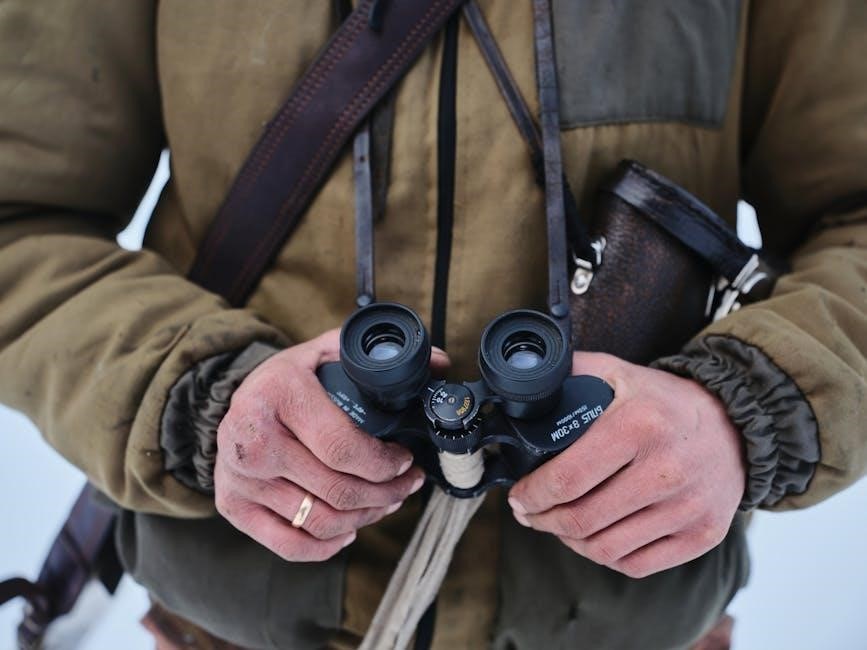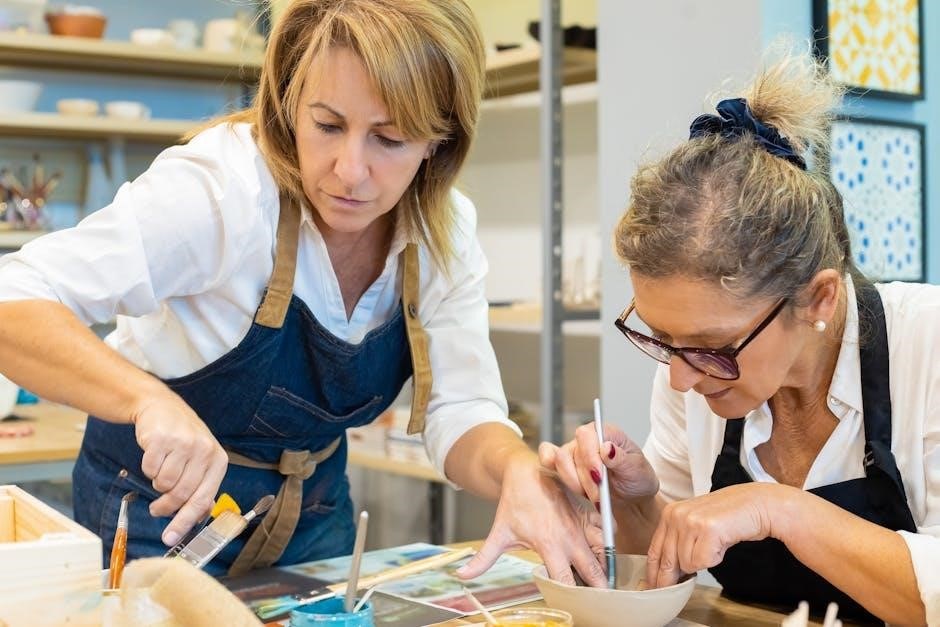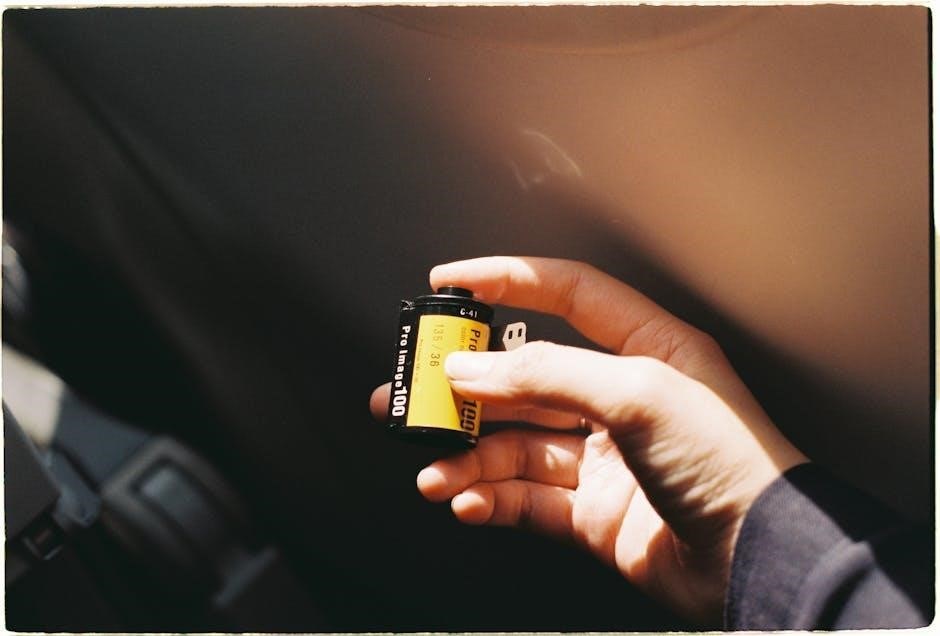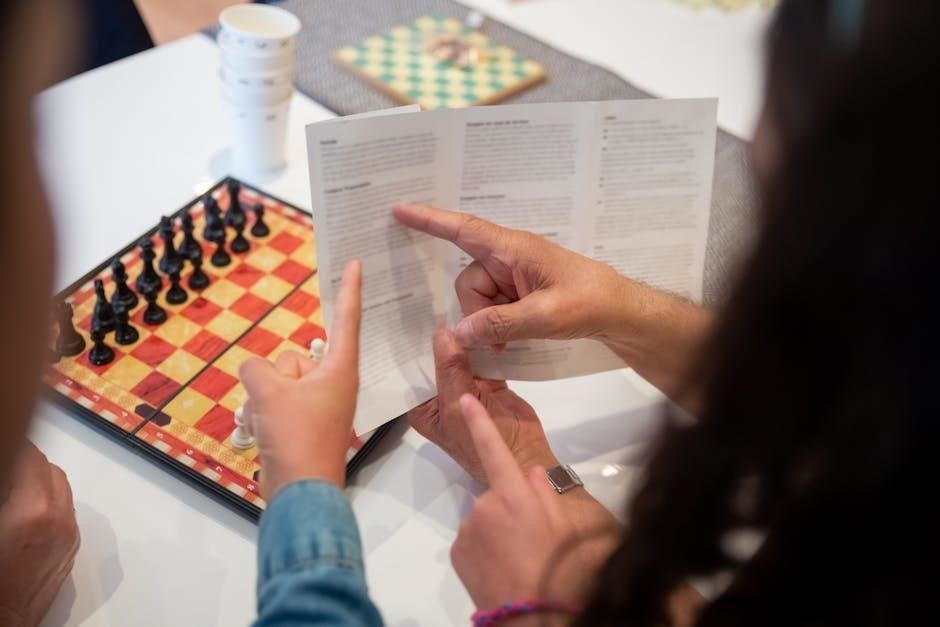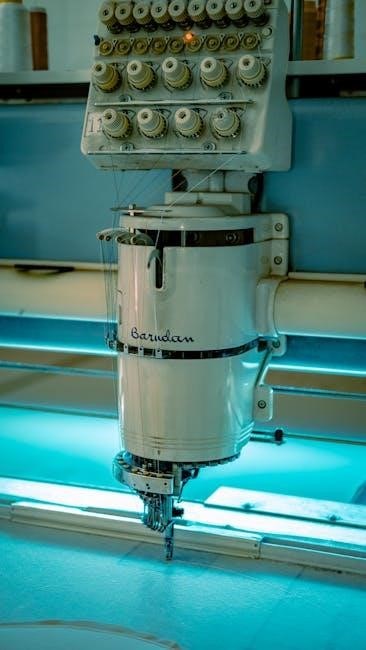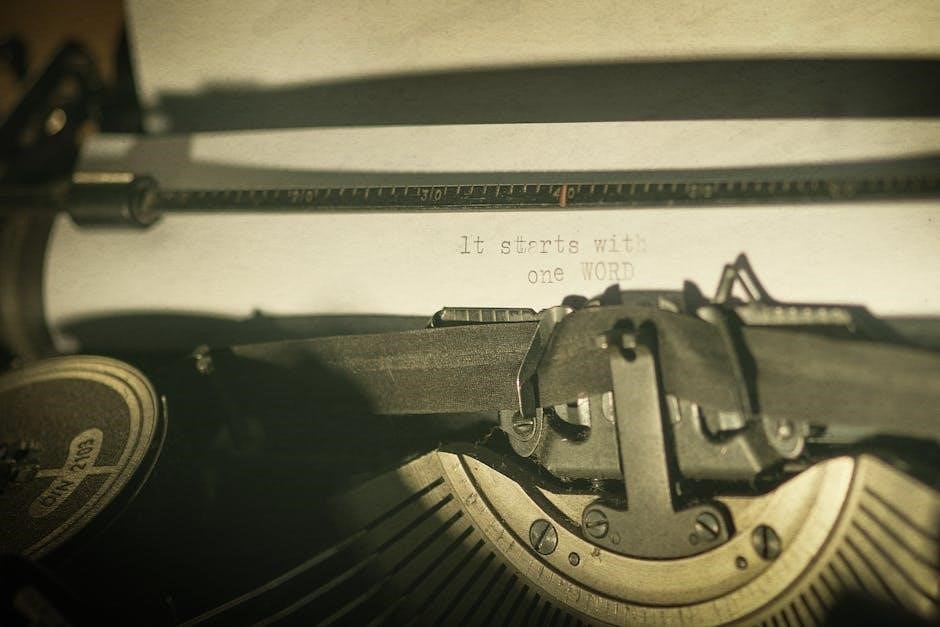orbit voyager ii manual
Voyager 2‚ launched in 1977‚ embarked on a grand tour of the outer planets‚ venturing into interstellar space and transmitting valuable data back to Earth.
Overview of Voyager 2’s Objectives
Voyager 2’s primary mission was a comprehensive study of Jupiter and Saturn‚ including their moons and ring systems. A unique “Grand Tour” trajectory enabled flybys of Uranus and Neptune‚ providing unprecedented data. The spacecraft aimed to characterize the atmospheric composition‚ magnetic fields‚ and geological features of these distant worlds.
Beyond planetary encounters‚ a key objective was to explore the outer reaches of our solar system and eventually enter interstellar space‚ directly measuring the conditions beyond the Sun’s influence. This included analyzing cosmic rays and plasma‚ contributing to our understanding of the galaxy.
Historical Context of the Launch (August 20‚ 1977)
Voyager 2 launched on August 20‚ 1977‚ from Cape Canaveral‚ Florida‚ predating its twin‚ Voyager 1. This timing was crucial for leveraging a rare planetary alignment‚ enabling a “Grand Tour” trajectory to all four gas giants. The launch occurred during a period of intense space exploration‚ fueled by the successes of the Apollo program and a growing public fascination with the cosmos.
The mission represented a bold step towards understanding the outer solar system‚ building upon previous observations and paving the way for future interstellar probes. It was a testament to engineering ingenuity and scientific ambition.

Understanding Voyager 2’s Systems
Voyager 2 relies on robust systems‚ including an RTG for power‚ 2.1 GHz & 8.4 GHz communication frequencies‚ and onboard data storage for interstellar exploration.
Power Systems: RTG (Radioisotope Thermoelectric Generator)
Voyager 2 utilizes a Radioisotope Thermoelectric Generator (RTG) as its primary power source‚ converting the heat from the natural decay of plutonium-238 into electricity. This was crucial for operation at vast distances from the Sun‚ where solar power is insufficient. The RTG provides a consistent‚ reliable power supply for decades‚ enabling continuous operation of the spacecraft’s instruments and communication systems. However‚ the RTG’s power output gradually declines over time due to the diminishing supply of plutonium‚ presenting long-term operational challenges as the mission continues its interstellar journey. Careful power management is essential to maximize the lifespan of the mission.
Communication Systems: Frequency Bands (2.1 GHz & 8.4 GHz)
Voyager 2 employs two primary frequency bands for communication with Earth: 2.1 GHz for receiving signals from Earth and 8.4 GHz for transmitting data to Earth. These frequencies were chosen to balance signal strength and atmospheric interference. As distance increases‚ signal strength diminishes significantly‚ requiring large ground-based antennas like those at the Deep Space Network. Maintaining a lock on these frequencies‚ despite interstellar distances and potential interference‚ is vital for receiving the spacecraft’s valuable scientific data and ensuring continued mission control.
Data Storage and Processing Capabilities
Voyager 2 utilizes a limited‚ yet robust‚ data storage system. It primarily employs a digital tape recorder for storing collected scientific data before transmission. Processing capabilities are relatively basic‚ focusing on data compression and formatting for efficient transmission. Due to the age of the technology‚ data handling is slow compared to modern standards. Prioritization of data is crucial‚ as bandwidth is limited‚ and all information must be carefully managed for successful relay back to Earth-based scientists.
Navigating with Voyager 2
Voyager 2’s trajectory involved precise trajectory correction maneuvers and carefully planned flybys of Uranus and Neptune‚ enabling its journey into interstellar space.
Trajectory Correction Maneuvers
Voyager 2 relied on a series of meticulously planned trajectory correction maneuvers (TCMs) throughout its decades-long mission. These adjustments‚ executed using onboard thrusters‚ compensated for gravitational influences from planets and other celestial bodies. TCMs ensured the spacecraft remained on course for its flybys of Jupiter‚ Saturn‚ Uranus‚ and Neptune‚ and ultimately‚ its entry into interstellar space.
Precise calculations and ground-based monitoring were crucial for determining the timing and duration of each maneuver‚ optimizing fuel efficiency and maintaining navigational accuracy. These maneuvers were vital for achieving the mission’s ambitious objectives.
Uranus and Neptune Flybys: Trajectory Details
Voyager 2’s trajectory was uniquely designed for close encounters with Uranus and Neptune‚ a “grand tour” unavailable to Voyager 1. Approaching Uranus in January 1986‚ the spacecraft came within 81‚500 kilometers of the planet’s cloud tops‚ gathering unprecedented data. Following a complex course correction‚ Voyager 2 reached Neptune in August 1989‚ achieving a closest approach of 4‚600 kilometers.
These flybys leveraged planetary gravity assists‚ altering the spacecraft’s speed and direction‚ propelling it further into the solar system and eventually‚ interstellar space.
Interstellar Space Entry and Current Location
Voyager 2 officially entered interstellar space on November 5‚ 2018‚ becoming only the second human-made object to do so. This milestone was determined by detecting a sharp drop in solar wind density. Currently‚ as of December 4‚ 2025‚ Voyager 2 is approximately 19.9 billion kilometers (12.4 billion miles) from Earth.
The spacecraft continues to travel outward at roughly 15 kilometers per second‚ sending back valuable data about the conditions beyond the heliosphere.

Decoding Voyager 2 Data
Voyager 2’s data‚ transmitted at 2.1 GHz & 8.4 GHz‚ requires specialized protocols for interpretation‚ revealing insights into interstellar plasma and cosmic rays.
Data Transmission Protocols
Voyager 2 utilizes specific frequency bands – 2.1 GHz for Earth-to-spacecraft and 8.4 GHz for spacecraft-to-Earth communication – to transmit its wealth of scientific data. These transmissions aren’t simple; they employ complex encoding schemes to ensure data integrity across vast interstellar distances. Protocols involve error correction‚ data packetization‚ and precise timing synchronization. The Deep Space Network (DSN) plays a crucial role‚ receiving these faint signals and decoding them into usable information. Signal processing techniques are essential to mitigate interference and extract the valuable scientific measurements from the background noise of space‚ allowing scientists to analyze the data effectively.
Interpreting Scientific Data from Interstellar Space
Voyager 2’s data from interstellar space reveals crucial insights into the heliopause – the boundary between our Sun’s influence and interstellar medium. Scientists analyze plasma wave data‚ cosmic ray fluctuations‚ and magnetic field measurements to understand this region. Interpreting these signals requires sophisticated models and careful calibration‚ accounting for signal degradation over immense distances. The data helps determine the density‚ temperature‚ and composition of interstellar plasma‚ providing a unique glimpse beyond our solar system’s protective bubble and furthering our understanding of galactic dynamics.
Analyzing Plasma Wave Data
Voyager 2’s Plasma Science Experiment (PLS) detects low-energy charged particles and plasma waves in interstellar space. Analyzing this data reveals information about plasma density‚ temperature‚ and velocity‚ crucial for understanding the heliopause and interstellar medium. Scientists examine wave spectra to identify different plasma processes and instabilities. These analyses help determine the interaction between the solar wind and interstellar plasma‚ providing insights into the structure and dynamics of the boundary region and the broader galactic environment.

Troubleshooting Common Issues
Voyager 2 faces challenges like signal loss and power management; NASA employs recovery procedures and interference mitigation techniques to maintain operational status.
Signal Loss and Recovery Procedures
When Voyager 2 experiences signal loss‚ NASA’s Deep Space Network (DSN) initiates procedures involving re-angling antennas and increasing transmission power. Automated systems attempt re-establishment‚ while engineers analyze telemetry for root causes – often solar interference or equipment anomalies. Recovery involves transmitting commands to reset systems or switch to redundant hardware. Precise trajectory knowledge is crucial for re-acquiring the faint signal‚ and careful monitoring of frequency bands (2.1 GHz & 8.4 GHz) is essential for successful reconnection and data flow resumption.
Power Management Concerns
Voyager 2 relies on a Radioisotope Thermoelectric Generator (RTG) which steadily declines in power output over time. NASA carefully manages power allocation‚ prioritizing essential systems like communication and scientific instruments. Engineers implement strategies to minimize heat production and optimize energy usage. As the RTG degrades‚ instruments are selectively turned off to conserve power‚ extending the mission’s lifespan. Predictive modeling helps anticipate future power levels and informs operational decisions‚ ensuring continued data transmission from interstellar space.
Communication Interference Mitigation
Voyager 2 communicates using 2.1 GHz and 8.4 GHz frequency bands‚ susceptible to interference from terrestrial sources and solar activity. NASA’s Deep Space Network employs sophisticated signal processing techniques to filter out noise and maintain a lock on the spacecraft’s faint signal. Predictive models of solar flares help anticipate disruptions‚ allowing for proactive adjustments to communication schedules. Redundancy in receiving stations further enhances reliability‚ ensuring continuous contact despite potential interference.

Voyager 2’s Instruments
Voyager 2 carries instruments like the Plasma Science Experiment (PLS) and Cosmic Ray System (CRS) to analyze interstellar plasma and cosmic radiation.
Plasma Science Experiment (PLS)
The Plasma Science Experiment (PLS) on Voyager 2 meticulously measures the properties of plasma – an ionized gas – encountered during its journey. This instrument determines plasma temperature‚ density‚ velocity distribution‚ and composition. By analyzing these characteristics‚ scientists gain insights into the solar wind’s interaction with planetary magnetospheres and the interstellar medium. PLS data reveals crucial details about the environment surrounding Voyager 2 as it traverses the vast expanse of interstellar space‚ providing a unique perspective on this largely unexplored region.
Cosmic Ray System (CRS)
Voyager 2’s Cosmic Ray System (CRS) diligently detects and measures high-energy charged particles originating from outside our solar system. These cosmic rays provide valuable clues about supernova explosions and other energetic events in the galaxy. The CRS identifies the energy and direction of these particles‚ helping scientists understand their origin and propagation through interstellar space; Analyzing cosmic ray data allows for a deeper comprehension of the galactic environment and its influence on our solar system’s boundaries.
Imaging Science Subsystem (ISS)
Voyager 2’s Imaging Science Subsystem (ISS) captured breathtaking images of Jupiter‚ Saturn‚ Uranus‚ and Neptune‚ revealing intricate details of their atmospheres‚ rings‚ and moons. Utilizing a telephoto and wide-angle camera‚ the ISS provided unprecedented views of these distant worlds. These images revolutionized our understanding of the outer solar system‚ showcasing dynamic weather patterns and geological features. The ISS data continues to be analyzed‚ offering new insights into planetary processes and evolution.

Maintaining Voyager 2
Maintaining Voyager 2 involves remote software updates‚ predictive maintenance‚ and careful power management to extend its operational lifespan in interstellar space.
Software Updates and Remote Control
Voyager 2’s longevity relies heavily on the ability to remotely update its software‚ compensating for decades of wear and tear on onboard systems. These updates‚ transmitted across vast distances‚ address anomalies and optimize instrument performance.
NASA engineers meticulously craft these patches‚ testing them extensively before upload. The Deep Space Network facilitates this communication‚ carefully managing signal strength and data integrity. Remote control allows for trajectory adjustments and instrument calibration‚ maximizing scientific return despite the spacecraft’s immense distance from Earth.
Predictive Maintenance Strategies
Voyager 2’s continued operation hinges on proactive predictive maintenance‚ anticipating potential failures before they occur. NASA employs sophisticated modeling to forecast component degradation‚ considering factors like radiation exposure and power fluctuations.
This allows engineers to strategically allocate remaining resources‚ prioritizing critical systems and adjusting operational parameters. Redundancy is key; switching to backup systems mitigates risks. Careful monitoring of telemetry data reveals subtle anomalies‚ enabling timely interventions and extending the mission’s lifespan in the harsh interstellar environment.
Long-Term Operational Considerations
Voyager 2’s longevity presents unique challenges. Diminishing power from the RTG necessitates careful energy management‚ prioritizing essential instruments and reducing non-critical operations.
Maintaining communication across vast distances requires precise antenna alignment and robust error correction protocols. Software updates‚ though limited by bandwidth‚ are crucial for adapting to evolving conditions. The mission’s ultimate fate depends on balancing scientific return with the spacecraft’s dwindling resources‚ ensuring continued data transmission for as long as possible.

The Voyager Golden Record
Voyager 2 carries a Golden Record‚ a phonograph record containing sounds and images representing life on Earth‚ intended for any extraterrestrial civilizations.
Content and Purpose of the Golden Record
The Golden Record’s content is a message in a bottle cast into the cosmic ocean. It includes greetings in 55 languages‚ sounds of Earth – like wind‚ rain‚ and animal noises – and a curated selection of music spanning various cultures and eras.
Images depict human anatomy‚ Earth’s landscapes‚ and scientific diagrams. The purpose wasn’t necessarily expecting a reply‚ but rather to demonstrate humanity’s existence and achievements‚ offering a snapshot of our world to any potential intelligent life encountered. It’s a testament to our curiosity and hope for connection.
Encoding and Playback Information
The Golden Record utilizes analog audio and digital images. Audio is encoded in stereo‚ while images are represented as a series of binary code. Instructions for playback are etched onto the record’s cover‚ including a symbolic representation of the hydrogen atom to establish a unit of time and length.
A cartridge and stylus are also diagrammed‚ detailing how to construct a simple record player. The encoding aims for universality‚ assuming a technologically advanced civilization could decipher the information‚ even without prior knowledge of Earth’s systems.
Cultural Significance of the Message
The Golden Record represents humanity’s attempt to communicate its existence and culture to potential extraterrestrial life. It’s a time capsule of Earth’s sounds‚ music‚ and images‚ reflecting a hopeful vision of our planet. The selection of content‚ curated by a committee led by Carl Sagan‚ aimed to showcase the diversity and achievements of human civilization.
It embodies a profound philosophical statement about our place in the cosmos‚ expressing a desire for connection and understanding beyond Earth’s boundaries‚ a message of peace and goodwill.

Future of the Voyager 2 Mission
Voyager 2’s lifespan is limited by dwindling power‚ but continued data transmission remains possible‚ offering potential for further interstellar discoveries and lasting legacy.
Expected Lifespan and Power Degradation
Voyager 2’s operational future hinges on its Radioisotope Thermoelectric Generator (RTG)‚ which converts heat from decaying plutonium into electricity. This power source steadily declines‚ approximately 0.75% per year. Current projections suggest sufficient power for scientific instruments to operate through the 2020s‚ potentially reaching the early 2030s.
However‚ decisions regarding instrument usage will become increasingly critical as power diminishes. NASA may prioritize essential systems‚ potentially shutting down non-critical instruments to extend the mission’s overall lifespan. Ultimately‚ the mission will conclude when the RTG can no longer provide adequate power for communication with Earth.
Potential for Further Discoveries
Voyager 2 continues to traverse interstellar space‚ offering a unique opportunity to study the heliopause – the boundary between our Sun’s influence and interstellar medium. Further analysis of plasma wave data could reveal more about the interstellar magnetic field and cosmic ray propagation.
Unexpected events‚ like encounters with new magnetic structures or variations in plasma density‚ could yield surprising insights. Even with diminishing power‚ the spacecraft remains a valuable asset for understanding the local interstellar environment and its interaction with our solar system.
Legacy and Impact on Space Exploration
Voyager 2’s enduring mission has fundamentally reshaped our understanding of the outer solar system and interstellar space‚ inspiring generations of scientists and engineers. Its successful flybys of Uranus and Neptune remain unparalleled achievements in planetary exploration.
The mission demonstrated the feasibility of long-duration space travel and remote spacecraft operation‚ paving the way for future interstellar probes. The Golden Record symbolizes humanity’s ambition and curiosity‚ leaving a lasting cultural legacy beyond our solar system.

Frequently Asked Questions (FAQ)
Common questions regarding Voyager 2’s status often concern signal strength and data interpretation‚ especially as it journeys further into interstellar space.
Common Questions About Voyager 2’s Status
Frequently asked questions center around Voyager 2’s operational health as it explores interstellar space. Many inquire about the spacecraft’s power levels‚ given its reliance on a Radioisotope Thermoelectric Generator (RTG). Concerns also arise regarding signal strength‚ acknowledging the immense distance and the use of 2.1 GHz and 8.4 GHz frequency bands for communication.
Additionally‚ users often ask about the longevity of the mission‚ considering potential power degradation and the challenges of maintaining contact over such vast distances. NASA provides updates on the spacecraft’s status and addresses these concerns through its Voyager website and scientific publications.
Addressing Concerns About Signal Strength
Signal strength from Voyager 2 diminishes with distance‚ requiring highly sensitive receivers on Earth. NASA utilizes the Deep Space Network to capture these faint signals‚ transmitted at 2.1 GHz and 8.4 GHz. Fluctuations occur due to solar activity and the spacecraft’s orientation.
Recovery procedures involve adjusting antenna pointing and employing sophisticated signal processing techniques. While signal loss is a concern‚ engineers continuously optimize communication protocols to maintain contact and ensure continued data flow from interstellar space.
Clarifying Data Interpretation
Interpreting Voyager 2’s data requires careful consideration of instrument limitations and the vast distances involved. Data transmission protocols are complex‚ necessitating specialized software and expertise. Scientific teams meticulously analyze plasma wave data and other measurements‚ accounting for potential interference and signal degradation.
Understanding the context of each measurement—spacecraft position‚ solar activity—is crucial for accurate conclusions. Data validation and cross-referencing with other observations ensure the reliability of Voyager 2’s groundbreaking discoveries.

Resources and Further Information
Explore NASA’s Voyager website for mission details‚ scientific publications‚ and educational materials. Discover in-depth data and updates on this interstellar journey!
NASA Voyager Website
The official NASA Voyager website (voyager.jpl.nasa.gov) serves as the primary hub for all things related to the Voyager 1 and Voyager 2 missions. Here‚ you’ll find comprehensive mission overviews‚ stunning imagery captured during planetary flybys‚ and the latest news updates regarding the spacecraft’s current status in interstellar space.
Detailed information on the instruments aboard Voyager 2‚ along with explanations of the scientific data being returned‚ is readily available. The site also features interactive tools‚ educational resources for students of all ages‚ and links to relevant scientific publications. It’s an invaluable resource for anyone seeking to learn more about this groundbreaking exploration.
Scientific Publications on Voyager 2 Data
Numerous peer-reviewed scientific publications detail the findings from Voyager 2’s decades-long mission. These papers‚ available through databases like NASA’s Astrophysics Data System (ADS) and journals such as Science and Nature‚ present in-depth analyses of the data collected during the Uranus and Neptune flybys‚ and its ongoing journey through interstellar space.
Researchers explore plasma wave data‚ cosmic ray measurements‚ and planetary atmospheric compositions. These publications offer a rigorous understanding of the heliopause‚ interstellar medium‚ and the outer solar system‚ building upon Voyager 2’s pioneering observations.
Educational Materials for Students
NASA provides a wealth of educational resources centered around the Voyager 2 mission‚ designed for students of all ages. These include lesson plans‚ interactive simulations‚ and downloadable images and videos showcasing Voyager 2’s discoveries. Websites offer detailed information on the spacecraft’s instruments‚ trajectory‚ and the environments it has explored.
Educators can utilize these materials to teach concepts in physics‚ astronomy‚ and space exploration. These resources inspire the next generation of scientists and engineers‚ fostering a deeper understanding of our universe.

